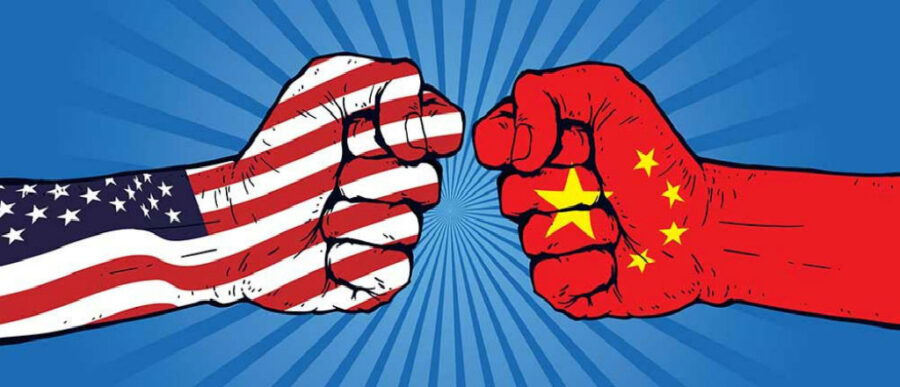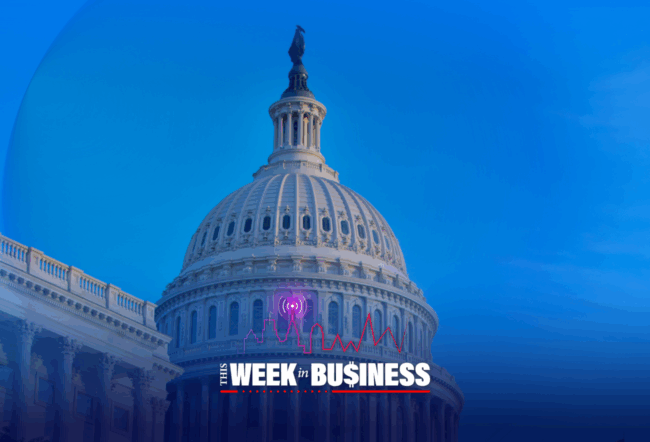The U.S. decision on Wednesday to indefinitely postpone its plans to tame China with stiff import tariffs has certainly removed immediate fears of an escalating Sino-U.S. trade war that could be costly for both countries. The move allows breathing space for policy makers and trade negotiators on both sides to revisit the sticking points in the lingering disputes, especially those related to U.S. concerns over protection of intellectual property rights and China requiring U.S. companies to transfer technology if they want to access its domestic market of 1.4 billion.
Although China has recently set up a specialized court in Beijing to deal with intellectual property rights, enforcement remains a key obstacle, and a deeper concern is a cultural disconnect over those rights between businesses in the two countries, according to experts at Wharton and Fordham University.
The U.S. was set to increase tariffs from 10% to 25% on $200 billion worth of imports from China effective Friday, March 1, with the expiration of a 90-day suspension of tariff increases to allow for talks between the two countries. However, U.S. Trade Representative Robert Lighthizer told a House Ways and Means Committee meeting on Wednesday that the U.S. has called off that action, citing progress in the talks with China. Lighthizer reasoned that the two countries have reached “a tentative agreement on a mechanism to enforce the trade deal, which has long been a stumbling block in talks,” the Wall Street Journal reported. He added that if the talks fail, the U.S. would impose the higher tariffs.
President Donald Trump indicated over the weekend that the U.S. was willing to extend the deadline for imposing the higher tariffs beyond March 1. In the first of two tweets on Sunday, he cited progress in talks with China on issues including IP protection, agriculture and currency rates. He added that assuming both sides make progress on continuing talks, he would “conclude an agreement” at a summit with Chinese president Xi Jinping at his Mar-a-Lago resort in Florida.
Trump’s primary goal in delaying the tariff increases is to avoid spooking the stock markets, according to Matt Gold, adjunct law professor at Fordham University and a former deputy assistant U.S. trade representative for North America. “He just doesn’t want to do it because of the negative impact it will have on stock markets, which is the only real and objective indicator of his presidency that has been positive,” he said. “We don’t know if he really has a basis for this extension or not.” Trump also wants to stamp a future agreement as “his,” by announcing it at his Mar-a-Lago resort, Gold added.
As it happens, the Dow Jones rose after Trump’s announcement, but fell after Lighthizer’s comments on Wednesday as the markets sensed uncertainty in his hints that a trade deal was not certain, according to a CNBC report.
“The fact that there’s more negotiation means the concept of IP is established now [in China].” –Minyuan Zhao
According to Wharton management professor Minyuan Zhao, tariffs of 25% on imports from China “would be devastating for both parties.” Not only would Chinese exporters find their profits squeezed, they would also defer investments amid the uncertainty in the trade environment, she said.
Zhao and Gold spoke about what effective trade deal between the U.S. and China would look like on the Knowledge at Wharton radio show on SiriusXM. (Listen to the podcast at the top of this page.)
The Threat to IP Rights
The concerns U.S. companies have over protection of their IP rights in China are big and real. As a member of the World Trade Organization (WTO), China is obligated to protect the IP rights of its trading partners, Gold pointed out. Yet, “China has programs” designed to sidestep those obligations, he said. “They steal intellectual property rights outright [and there is] piracy, but they also require U.S. companies to enter into joint ventures with Chinese companies to get into their markets, through which they also steal IP. They force technology transfers as a price of doing business in China.”
Zhao agreed with Gold, but put a historical and cultural perspective to the risks IP rights face in China. IP thefts have been rampant in China for a long time, and the thinking behind that is, ‘If I see something good, I want to do it, too,’ said Zhao. However, the Chinese government is taking corrective action, she added. In January, China set up a specialized IP court in Beijing. More generally, multinational companies have of late had easier access to the court system enforcement of laws as well, she noted.
One troublesome gray area is “state-led learning,” or the indigenous innovation push in China. State-owned enterprises in China compel MNCs that want to tap the Chinese markets to part with their technical knowhow in what has been termed as “forced technology transfer.” Twenty years ago, Chinese companies wouldn’t even have bothered to inform their MNC partners about their plans for such technology transfers – “they just take it and start producing,” said Zhao. “The fact that there’s more negotiation means the concept of IP is established now [in China]. But the state is in such a dominant position that they can [compel] companies into this seemingly mutual agreement of technology transfer.” Beyond the risks to protection of IP rights, the larger threat to MNCs operating in China is its state-dominated development model where it has “the discretion” on how to pursue its IP goals, she added.
Need for a Cultural Shift
The mindset in China is rooted in its Communist philosophy where “the concept of property itself didn’t exist for a long time,” said Gold. “Now, most people do finally understand intellectual property, but it does require a cultural shift. And China is in the midst of that shift.” The overarching role in business of the government in China has a redeeming aspect to it, too, he noted. “One positive about the government’s dominance is that if the government agrees to respect U.S. intellectual property and the government decides it’s going to enforce that, it can bring about enforcement,” he said. “Not very fast, but it can bring about that enforcement and a process towards enforcement in a reasonable timeframe.”
“The Trump administration has dramatically undermined the credibility of the WTO agreements and of its enforcement process by ignoring the U.S.’s own obligations under the process.” –Matt Gold
Zhao pointed out that it can be tricky to define IP thefts. “Even in the U.S., companies are suing each other all the time in pharmaceuticals and in many of the high tech industries,” she said. “Companies learn about what their competitor is doing through various channels; they want to reverse engineer what [their competitor is doing] by avoiding intellectual property rights disputes.” A closer understanding of “the dynamic process of R&D, not only internationally but also in domestic economy” is important to get the right perspectives on this issues, she added. “I am not denying that China is doing a lot of copying, but understanding the nuances can be helpful for both [countries].”
On issues outside of IP rights, China and the U.S. might find more room for agreement. In agriculture, for instance, China would be ready to import more soybeans from the U.S., Zhao said. “China needs it and the U.S. is the cheapest and highest-quality provider of the product,” she said. China has some concerns over being overly dependent on imports of agricultural products from the U.S., she added.
Bypassing the WTO
The U.S.-China trade discussions are “sidelining the WTO, and rendering it irrelevant,” Zhao said. Gold agreed: “The Trump administration has dramatically undermined the credibility of the WTO agreements and of its enforcement process by ignoring the U.S.’s own obligations under the process.”
Although China’s actions on IP rights violated WTO rules, the Trump administration chose to bypass the WTO dispute resolution process, and “retaliated against China outside that process,” Gold said. He noted that the insistence of the U.S. Trade Representative (USTR) on a separate enforcement mechanism also ignores the WTO’s own enforcement mechanisms.
Instead of unilaterally imposing higher tariffs on imports from China, the Trump administration could have achieved its objectives through the WTO mechanisms, said Gold. “[Trump] would have had the opportunity to impose the exact same tariffs if he had gone through the WTO dispute resolution process,” he added. “He just would have had to prove his case before a WTO panel and then prove it again before the WTO appellate body before getting permission. It would have taken three or four years.” The U.S. acted in a similar fashion when it levied tariffs last June on steel and aluminum imports from Canada, Mexico and the European Union, he added.
The U.S. has on occasion dragged China to the WTO over alleged trade improprieties. Earlier on Thursday, the USTR announced that a WTO dispute settlement panel found that “China has provided trade distorting domestic support to its grain producers well in excess of its commitments under WTO rules.” The case dates back to December 2016, when the USTR had asked the WTO to consider whether China provides “market price support” for certain varieties of rice, wheat and corn in excess of its domestic support commitments. “This panel report is a significant victory for U.S. agriculture that will help American farmers compete on a more level playing field,” the USTR stated.
“I am not denying that China is doing a lot of copying, but understanding the nuances can be helpful for both [countries].” –Minyuan Zhao
Making an Effective Trade Pact
Trade agreements are of course worthless if they are not implemented. “It’s one thing to write down the terms and the conditions; it’s another thing to think about enforcement,” said Zhao. The reality is that China would use the power of its state to maximize its growth prospects, she noted. It is imperative to have agreement in terms of how the legal framework will take root in China and ensure enforcement of laws, she said.
All said, the best tool is for both parties to have a mutual interest in protecting IP rights, Zhao said. “How will the U.S. monitor the enforcement of those rules? Are you going to check every single factory? Are you going to be the default police station in China?” she asked. “I don’t think so. One reason why WTO had been going on for decades is the [member] countries see a stake in getting the collaboration going. [They] see the collective good in having an international trading platform and don’t want to sabotage the platform by deviating too far. That’s a more powerful tool than tariffs.”
According to Zhao, U.S.-China negotiations are not just about trade, but also have longer-term implications on the “development models” China adopts. She noted that the trade talks would outline the restrictions China might face in pursuing its development model, which includes the Made in China 2025 program to move towards becoming a producer of high-end goods with appropriate investments in R&D, including in information technology, robotics and clean energy.



